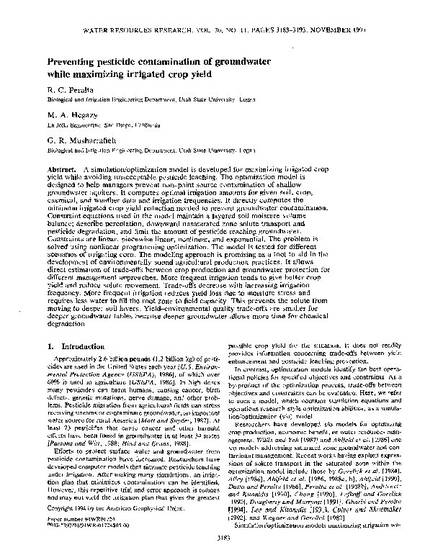
A simulation/optimization model is developed for maximizing irrigated crop yield while avoiding unacceptable pesticide leaching. The optimization model is designed to help managers prevent non-point source contamination of shallow groundwater aquifers. It computes optimal irrigation amounts for given soil, crop, chemical, and weather data and irrigation frequencies. It directly computes the minimum irrigated crop yield reduction needed to prevent groundwater contamination. Constraint equations used in the model maintain a layered soil moisture volume balance; describe percolation, downward unsaturated zone solute transport and pesticide degradation; and limit the amount of pesticide reaching groundwater. Constraints are linear, piecewise linear, nonlinear, and exponential. The problem is solved using nonlinear programming optimization. The model is tested for different scenarios of irrigating corn. The modeling approach is promising as a tool to aid in the development of environmentally sound agricultural production practices. It allows direct estimation of trade-offs between crop production and groundwater protection for different management approaches. More frequent irrigation tends to give better crop yield and reduce solute movement. Trade-offs decrease with increasing irrigation frequency. More frequent irrigation reduces yield loss due to moisture stress and requires less water to fill the root zone to field capacity. This prevents the solute from moving to deeper soil layers. Yield-environmental quality trade-offs are smaller for deeper groundwater tables because deeper groundwater allows more time for chemical degradation.
